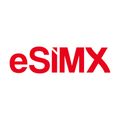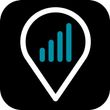MicroEsim provides eSIM services in 100+ countries & regions, offering fast local connectivity and diverse data plans for global travelers. Enjoy instant email delivery and immediate activation. Stay connected travelling abroad.

MicroEsim provides eSIM services in 100+ countries & regions, offering fast local connectivity and diverse data plans for global travelers. Enjoy instant email delivery and immediate activation. Stay connected travelling abroad.
Promo Code
MicroEsim eSIM Data Plans for Slovenia
Frequently Asked Questions
Does MicroEsim offer unlimited data eSIM for Slovenia?
MicroEsim provides several eSIM plans that grant unlimited data for travel in Slovenia. These plans cover validity periods from 1 day up to 15 days and can be purchased at prices ranging from about $3 for a 1 day plan to roughly $60 for a 15 day plan. All of the plans list the data cap as Unlimited and apply to 4G, 5G, or LTE networks in Slovenia.
Like most carriers, MicroEsim implements a Fair Usage Policy on its unlimited plans, meaning that while you receive unlimited data, network speeds may be throttled after a certain level of heavy usage. If you are concerned about speed restrictions, it is recommended to contact MicroEsim for details about the typical data volume that remains at normal speed before any throttling takes effect.
Does MicroEsim offer Slovenia eSIM with phone number and SMS?
MicroEsim does not provide a Slovenia eSIM plan that includes a phone number or SMS capability. The provider offers only data‑only eSIMs, and travelers can rely on VoIP applications such as WhatsApp, Telegram, and iMessage over the data connection for calls and messaging.
How many data plans does MicroEsim offer for Slovenia?
MicroEsim provides 53 single‑country plans and 513 multi‑country plans that include Slovenia. The plans cover a wide price spectrum from about $0.90 to $368.36, data volumes from 200 MB up to unlimited, and validity periods ranging from 1 to 90 days. Offerings are split into two main types: daily data‑cap plans, which reset every day and give users a daily allowance, and fixed‑amount data plans, where a set amount of data is available for the entire validity period, allowing travelers to choose the approach that best fits their usage habits.
Summarized by Gen AI. Last updated:




